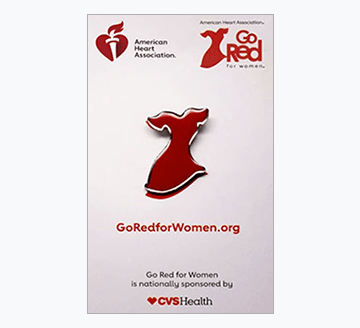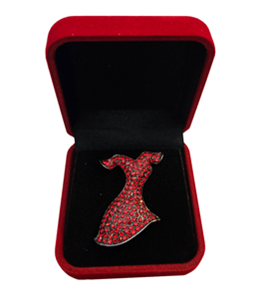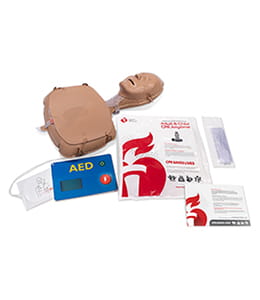 Go Red for Women®
Go Red for Women® National Wear Red Day® and American Heart Month
SAVE THE DATE! National Wear Red Day is Friday, February 6, 2026.
Get ready to GO RED in support of women’s cardiovascular health by wearing red, sharing information and resources, and donating to support research and education.

The Nation Goes Red in February
From landmarks to online communities, neighborhoods to news anchors, this annual groundswell unites millions of people for a common goal: saving more women’s lives. Cardiovascular disease is the No. 1 killer of women. Wear red to be seen, to be counted, to be heard, and to make an impact. Together, we are stronger than heart disease and stroke.

Wear Red and Give
Get started today by setting up your own fundraising page. In just three easy steps, you can invite your friends and family to join in the fun.
National Wear Red Day 2026 Resources
National Wear Red Day is almost here! Grab your friends and get red-y. These resources are everything you need to get started!
Posters - Downloadable Resources
Print Ads - Downloadable Resources
Social Media - Downloadable Resources
National Wear Red Day
Social Media Assets - 1080 × 1350 px
- National Wear Red Day is in One Week (ZIP)
- National Wear Red Day is on Friday (ZIP)
- National Wear Red Day is Tomorrow (ZIP)
- National Wear Red Day is Today (ZIP)
- National Wear Red Day is in One Week Spanish (ZIP)
- National Wear Red Day is on Friday Spanish (ZIP)
- National Wear Red Day is Tomorrow Spanish (ZIP)
- National Wear Red Day is Today Spanish (ZIP)
Social Media Assets – 1080 × 1920 px
- National Wear Red Day is in One Week (ZIP)
- National Wear Red Day is on Friday (ZIP)
- National Wear Red Day is Tomorrow (ZIP)
- National Wear Red Day is Today (ZIP)
- National Wear Red Day is in One Week Spanish (ZIP)
- National Wear Red Day is on Friday Spanish (ZIP)
- National Wear Red Day is Tomorrow Spanish (ZIP)
- National Wear Red Day is Today Spanish (ZIP)
Cover Images – Social Media Assets
- National Wear Red Day Social Media Cover Images (ZIP)
- National Wear Red Day Social Media Cover Images Spanish (ZIP)
Wear Red and Give
Social Media Assets – 1080 × 1350 px
Social Media Assets – 1080 × 1920 px
Activation Guide - Downloadable Resource
Fundraising Guide Resources
Go Red Gear
Pins, pamphlets, shirts and more! We have everything you need to Go Red to
raise awareness, show your support and help fund our mission with every purchase.
Shop & Go Red! raise awareness, show your support and help fund our mission with every purchase.

Red Dress Pins
The iconic red dress pin has been a symbol of women’s heart health for more than two decades. This yearly chart-topper is the perfect addition of style and awareness for any outfit.Need Help?




